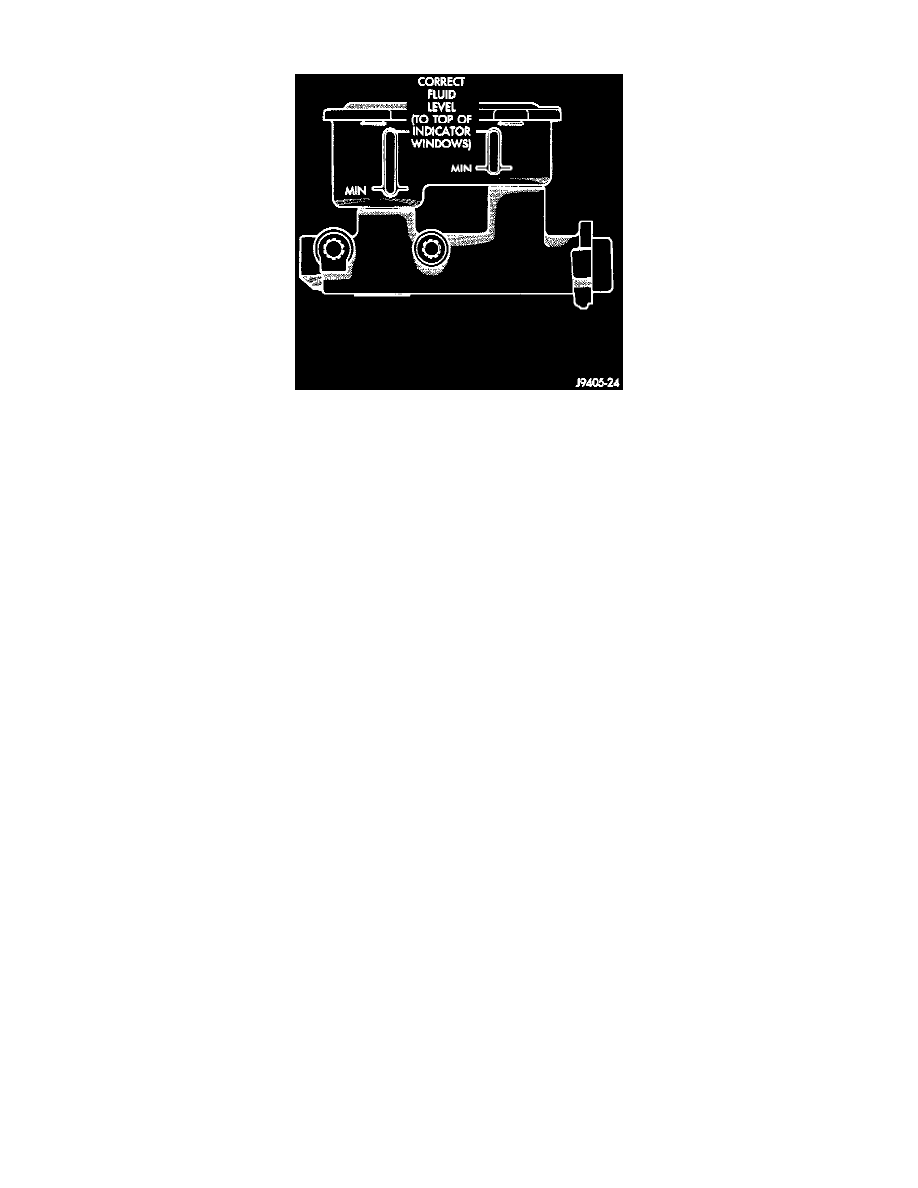RAM 3500 Truck 4WD V10-8.0L VIN W (1997)

Brake Fluid: Service and Repair
Fluid Level Indicators (Model 3500)
FLUID LEVEL CHECK
Correct fluid level is to the top of the oval indicator window on the side of the reservoir. An acceptable level is between the top of the indicator
window and the MIN mark. The hydraulic system should be checked for leaks, or the brake shoes for excessive wear, if fluid level is very near the
MIN level. Always clean the master cylinder reservoir and cover before removing the cover to add fluid. If this is not done, dirt from the cover or
reservoir could enter the fluid. Add fluid to the correct level if necessary. Note that fluid level in the reservoirs will decrease slightly in proportion
to lining wear. This is a normal condition. If fluid is needed, use Mopar brake fluid or an equivalent meeting SAE standard J1703 and Federal
standard DOT 3. Check the cover diaphragm seal and replace it if torn or distorted. Snap the seal into place before installing the cover.
CAUTION: Verify that the diaphragm seal is firmly seated in the reservoir cover. If the seal is improperly seated, it will shift out of position
when the cover is installed resulting in fluid leakage and eventual contamination.
Indications Of Fluid Contamination - are swollen or deteriorated rubber parts. Swollen rubber parts indicate the presence of petroleum in the
brake fluid. To test for contamination, put a small amount of drained brake fluid in clear glass jar. If fluid separates into layers, there is mineral oil
or other fluid contamination of the brake fluid. If brake fluid is contaminated, drain and thoroughly flush system. Replace master cylinder,
proportioning valve, caliper seals, wheel cylinder seals, ABS hydraulic unit and all hydraulic fluid hoses.
